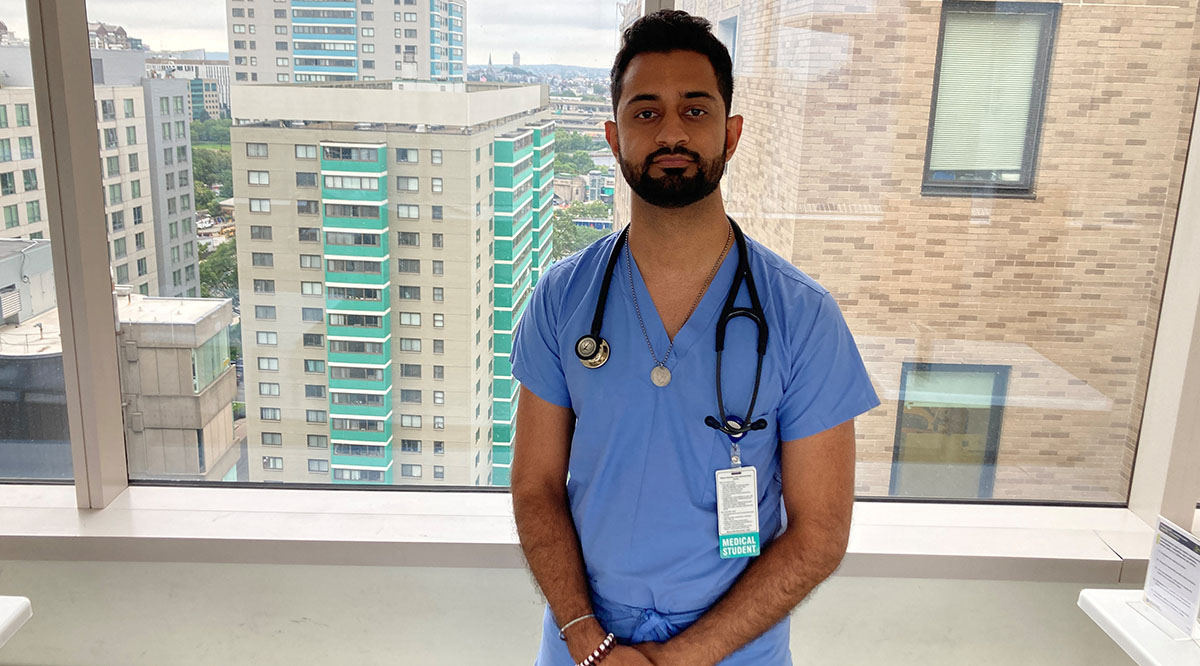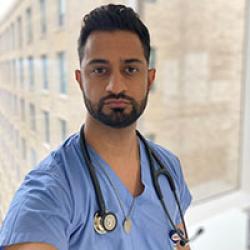
“If your end goal is to be a physician, you should not go to the United States for college.”
This was the advice I received as a high school student in Tanzania while considering where to apply to college. My advisor made it clear that my chances of being accepted to a U.S. medical school were slim, predominantly because very few schools accepted international students. Moreover, as a low-income student, my advisor warned me that a medical degree in the United States was financially inaccessible. I decided to take my chances anyway.
From a young age, I’ve wanted to be a physician. While shadowing in under-resourced communities in Tanzania, I witnessed people in my country suffer the long-term morbidities associated with delayed treatment of infectious diseases such as malaria. I wanted to ensure that my fellow Tanzanians — especially those living in underserved areas — received appropriate care in a timely manner. I saw a medical education in the United States as an opportunity to bridge the knowledge gap that currently exists. Learning about innovative ways to curb disease spread and prevent reinfection was something I wished to master in the United States and then implement in Tanzania. Moreover, I was determined to be at the forefront of cutting-edge research on diseases that afflicted my country and contribute to the advancement of their diagnosis and treatment.
To be accepted at a U.S. medical school, the first step was attaining a U.S. college degree. Having never set foot in the United States, I applied broadly to colleges across the country that not only accepted non-U.S. citizens but also provided financial aid to cover the cost of attendance. I was accepted at Yale University, where I pursued a bachelor’s degree in molecular, cellular, and developmental biology — a major that fulfilled most of the premed requirements. To strengthen my application, I performed research on malaria and other parasitic infections for over two years, culminating with an internship at the World Health Organization Global Malaria Programme. Finally, I took graduate-level courses during college and for an additional year after and successfully graduated with a master’s degree in public health from the Yale School of Public Health.
I vowed that if I ever got into medical school, I would do my part to ensure that the next generation of immigrant doctors felt supported, received the guidance they needed to apply, and had people they could look up to.
But as I neared the time to apply to medical school, I was discouraged to find that there were few resources to help students like me. I searched extensively for information online, even relying on blogs and informal sites at times to ascertain my eligibility. Yet so many of my questions about visas during medical school, financial aid for international students, and the feasibility of applying remained unanswered. Doubt began to set in as I wondered if my advisor was right all along and if this path I had started would come to a premature end.
During my online searching, I came across the AAMC website that stated how many international students were accepted to medical school in any given year, but there didn’t seem to be any way to connect with those students. Instead, I found myself navigating the process alone, discouraged by a lack of mentors. I vowed that if I ever got into medical school, I would do my part to ensure that the next generation of immigrant doctors felt supported, received the guidance they needed to apply, and had people they could look up to.
In the summer of 2017, I began taking the necessary steps to submit my medical school application the following year. It started with scouring the websites of dozens of medical schools in the United States to decipher whether they accepted international applicants and if international students were eligible for any financial support, including institutional loans. The fact is that many U.S. medical schools do not accept international applicants, and international students only make up about 0.6% of all U.S. medical school matriculants. Trying to find schools that provided any financial support to attend medical school was further disheartening. Being home in Tanzania for the summer also meant that the nearest location I could take the MCAT® exam was South Africa. I was fortunate enough to be approved for a loan to offset the cost of the exam and application submission. One of the most stressful experiences was figuring out whether I could work in the summer to pay off this financial burden without jeopardizing my visa status or my ability to work post-medical school.
I was elated to be accepted to three U.S. medical schools with financial aid packages from each. The journey had been an emotional roller coaster from its inception.
Our mission is to cultivate a community of foreign-born health care workers who uplift one another through a free, online, peer-to-peer mentorship platform. Moreover, we aim to break the myths about applying as a non-U.S. citizen and assert that international students can be accepted to health professions schools and that financial aid does exist.
After my acceptance, I immediately turned my attention to carving a path for future immigrant doctors. As luck would have it, while posting about my journey on Twitter, I met two other international medical students at Warren Alpert Medical School of Brown University: Ben Gallo Marin and Ghazal Aghagoli. Together, we built F-1 Doctors, a web-based platform focused on helping non-U.S. citizens apply to health professions schools in the United States.
F-1 Doctors, named after the type of visa international students must obtain, offers guidance, resources, and visibility for non-U.S. applicants to health care professions programs. The platform offers resources specific to applying as an international student, including webinars, a custom-built Excel spreadsheet of medical schools that accept international students and their respective financial aid policies, and links to private institutions that provide loans to non-U.S. citizens.
Our mission is to cultivate a community of foreign-born health care workers who uplift one another through a free, online, peer-to-peer mentorship platform. Moreover, we aim to break the myths about applying as a non-U.S. citizen and assert that international students can be accepted to health professions schools and that financial aid does exist.
In just over a year, F-1 Doctors has grown from fewer than 20 mentors to more than 130 who represent 44 countries from a variety of health professions backgrounds. Many of our mentors are eager to support students who are embarking on a journey like theirs, wishing that this resource had existed during their application process.
For students who are in medical school in the United States or abroad, F-1 Doctors also offers mentors to help students navigate the path to residency.
To my surprise, the challenges impeding the delivery of care to individuals in rural Tanzania were similar to the ones in underserved areas in the United States: different countries with analogous geographical and financial impediments.
For international students graduating from a health professions school in the United States, the decision whether to stay in this country or return to their home country is a personal one. For those who wish to remain in the United States, F-1 Doctors can be a helpful tool to bolster a pipeline of health professionals that is representative of the diverse patient populations in this country. In recent years, even as the population of the United States has become more culturally diverse, the health care workforce has lagged behind in representation. This can negatively impact patient care, as studies show that there is greater adherence to medical recommendations among patients when those recommendations come from a physician who can relate to the patient socially, culturally, and linguistically.
Others consider a career that incorporates their newly formed dual identities. In fact, many medical schools invest in global health experiences for their students to reinvest in their home communities — something international students often gravitate toward. Some residency programs have followed suit. The Doris and Howard Hiatt Residency in Global Health and Internal Medicine at Brigham and Women’s Hospital aids in the creation of an army of global physicians and caters to those who wish to serve in multiple countries.
In my case, my commitment to serving my fellow Tanzanians as a physician and building scalable interventions to improve accessibility of care remains unwavering. However, in my time spent in the United States, I realized that my work to halt the progression of long-term morbidities due to a lack of access to health care transcends geographical borders. To my surprise, the challenges impeding the delivery of care to individuals in rural Tanzania were similar to the ones in underserved areas in the United States: different countries with analogous geographical and financial impediments. I hope to split my time between both countries I now call home working on the same goal of improving health care accessibility.
Regardless of the career choice that non-U.S. citizens make, many are just like me, with dreams of becoming health care professionals to create change in the inequitable delivery of health care. As F-1 Doctors continues to expand its network across the country, we aspire to make the health professions school application process more accessible so international students don’t feel like they must go through this process alone.
